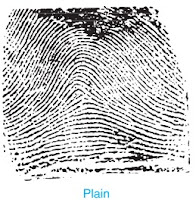Controlled Substance and its Acts
What is Controlled Substance?
A drug or any other substance which is strictly regulated by the government to prevent its abuse and addiction in normal people is known as a controlled substance. The control applies to the way the substance is manufactured, applied, managed, kept, and distributed. Control substances include opioids, stimulants, depressants, hallucinogens, and anabolic steroids.
Certain controlled substances have great medical use like morphine, valium, etc they are available only by prescription from a licensed medical professional whereas other controlled substances don't have any medical applications like heroin, LSD, etc and they are completely banned in the country.
Different acts related to the regulation of controlled substances are as follows:
1. United States Controlled Substances Act
Schedule 1
Drugs that have a high potential for abuse and do not have any medical application. For eg: Heroin, Lysergic acid diethylamide (LSD).
Schedule 2
Drugs that lead to serve psychological or physical dependence. For eg: Morphine, Methamphetamine.
Schedule 3
Drugs that may lead to moderate or low physical dependence or high psychological dependence. For eg, Barbiturates, anabolic steroids, codeine, etc.
Schedule 4
Drugs that may lead to limited physical dependence or psychological dependence compared to schedule 3 drugs. For eg: Valium and Xanax.
Schedule 5
Drugs that have a low potential for abuse. They may lead to limited physical dependence compared to schedule 4 drugs. For eg, Cough syrup, NSAIDs, etc.
2. NDPS Act, 1985
NDPS Act stands for Narcotic Drugs and Psychotropic Substances act. It was passed in Lok-Sabha on 25 august, 1985 and came into force on 14 November 1985.
It deals with the control and regulation of narcotic and psychotropic drugs like cocaine, heroin, LSD, MDMA, etc to minimize drug abuse additional to the normal population.
The NDPS act was amended four times. In 1988, 2001, 2014, and the latest 2021. The act is not only applicable to the whole of India but also applicable to all Indian citizens residing in other countries and all persons on ships and aircraft registered in India.
NDPS act established Narcotics Control Bureau (NCRB) with effect from March 1986. This act is designed to oblige international laws and conventions like UN Convention against illicit traffic in Narcotic Drugs and psychotropic substances.
Punishments under NDPS act are as follows:
- If the drug is found in a small quantity then imprisonment can be given up to 1 year and a fine of Rs 10,000 is imposed.
- If the drug is greater than a small quantity but less than a commercial quantity then imprisonment can be given up to 10 years and a fine of Rs 1 lac is imposed.
- If the drug found is greater than the commercial quantity then imprisonment can be given between 10 years to 20 years and a fine of 1 lac to 2 lac is imposed.
Important schedules of NDPS act are as follows:
(a) Schedule A
Deals with those controlled substances whose manufacture, distribution, sale, purchase, possession, storage, and consumption are subjected to control and regulation. Eg: Acetic Anhydride, Anthranilic acid, etc.
(b) Schedule B
Deals with those controlled substances whose export from India is subjected to control and regulations. Eg: Acetic anhydride, LSD, etc.
(c) Schedule C
Deals with those controlled substances whose import from India is subjected to control and regulations. Eg: Ergometrine and its salts.



